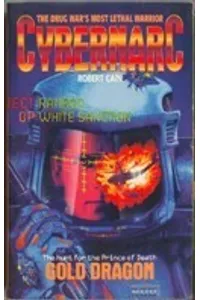Dive into the electrifying world of Cybernarc, where high-stakes military action meets cutting-edge sci-fi! Written by William H. Keith under the pseudonym Robert Cain, this 1990s series follows Navy SEAL Chris Drake and his robotic partner, Rod, as they wage a relentless war against international drug cartels. Packed with pulse-pounding combat and themes of vengeance, artificial intelligence, and humanity, Cybernarc is a hidden gem for fans of gritty action and futuristic intrigue.
Picture this: a Navy SEAL haunted by loss teams up with a billion-dollar android to dismantle global crime networks. It’s a buddy-cop dynamic with a sci-fi twist, set against a backdrop of corruption and conspiracy. Ready to explore this thrilling saga? Let’s break it down!
How Cybernarc Began
William H. Keith, a former U.S. Navy hospital corpsman turned prolific sci-fi and military fiction author, launched Cybernarc in 1991. Writing as Robert Cain, Keith drew on his naval experience to craft authentic combat scenes while weaving in speculative tech inspired by the era’s fascination with robotics. Published by Harper Paperbacks, the series was born during the War on Drugs, reflecting real-world tensions through a futuristic lens. Though Keith didn’t conceive the series himself, his knack for blending military grit with sci-fi flair made Cybernarc a standout.
The Heart of Cybernarc
The series kicks off with Cybernarc (1991), where Chris Drake, a battle-hardened SEAL, survives a botched mission in Colombia that claims his team. After losing his family to a cartel’s vengeance, Drake partners with Rod, a CIA-crafted android from Project RAMROD (Rand Artificially intelligent Military RObotic Device). Together, they hunt traitors and drug lords, uncovering corruption in the CIA’s ranks. The sequel, Gold Dragon (1991), amps up the action as Rod storms a Hong Kong hotel to take down Chinese drug lords, with Drake as his backup. Capo’s Revenge (1992) pits the duo against the Mafia in a Bahamas showdown, while End Game (1993) wraps the six-book series with a high-stakes finale.
Cybernarc’s themes dig deep into vengeance and justice, as Drake’s personal losses fuel his crusade. Rod, with his evolving AI, grapples with human emotions, sparking questions about what it means to be alive. The series’ style is fast-paced, blending tactical military detail with sci-fi innovation, set across global hotspots like Colombia, Hong Kong, and the Bahamas. Fans of RoboCop will vibe with its mix of high-tech heroism and gritty action, though Cybernarc leans into geopolitical intrigue over dystopian satire.
Why Cybernarc Resonates
Though niche, Cybernarc carved a unique space in 1990s sci-fi and action fiction. Its blend of military precision and speculative AI tapped into the era’s tech optimism and drug-war anxieties. Readers on platforms like Goodreads praise its high-octane sequences and surprising depth, with Rod’s quest for humanity adding emotional weight. While not a cultural juggernaut, the series’ cult following appreciates its unapologetic action and forward-thinking tech, making it a nostalgic treat for genre enthusiasts.
- Publication Years: 1991–1993
- Number of Books: 6
- Author: William H. Keith (as Robert Cain)
- Genre: Military Science Fiction, Action
Ready to join Chris Drake and Rod on their adrenaline-fueled mission? Grab Cybernarc and blast into a world of high-tech justice and heart-pounding adventure!





